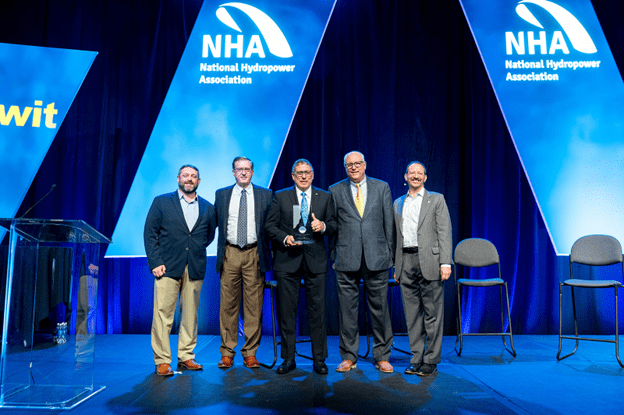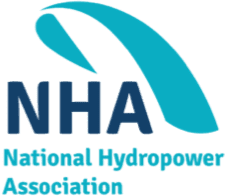During Clean Currents 2023, held in Cincinnati, Ohio, last October, Duke Energy received an Outstanding Stewards of America’s Waters Award (OSAW) in the category of Recreational, Environmental Enhancement” for its “Great Falls Reservoir Re-Diversion Project” project.
National Hydropower Association’s (NHA) OSAW Awards are an annual honor that recognizes deserving organizations in the hydropower and marine energy industry for projects that exhibit exemplary operational, educational, historical, recreational, or environmental enhancement and stewardship.
Duke Energy’s “Great Falls Reservoir Re-Diversion Project” project received an OSAW Award for the creation of world class whitewater river channels, the enhancement of natural habitats, and the restoration of a historic structure. Duke Energy’s work exemplifies the significant contributions hydropower provides as recreational and environmental benefits.

THE PROJECT
Great Falls Reservoir is the site of re-diversion of the Catawba River in South Carolina. The work grew out of a negotiated stakeholder agreement and the Federal Energy Regulatory Commission (FERC) license for the Catawba-Wateree Hydroelectric Project to restore aquatic habitats while providing recreation access to the natural whitewater river channels. The Great Falls Reservoir is one of eleven developments on the river that make up the Catawba-Wateree Hydroelectric Project (The Project).
The Project supports drinking water for over two million people and over 16 million recreation visits per year, and when Duke Energy’s thermal electric plants, which utilize The Project for cooling water, are considered, the combined electricity provided is enough to power over 4 million homes per year.
In 1907, the creation of the Great Falls Reservoir required the diversion of the river from two natural whitewater channels called the Long Bypass Reach (LBR) and the Short Bypass Reach (SBR). Returning water to SBR required the installation of pneumatic gates while the LBR flow release consisted of two breaches in the overflow spillway — one designed for habitat flows and one specifically designed for recreation flow releases.
In order to provide public access to these channels, the effort required the construction of a large access area; additionally, the remains of a building once part of a fertilizer complex constructed in 1910 were rehabilitated.
The team was challenged by the task of restoring flow releases and access to the LBR and SBR, as the channels had been mostly dry since 1907. The solution involved extensive hydraulic engineering analysis and modeling, legal and regulatory assessments, state and federal permitting, and construction efforts on land and water.
Re-establishing the historic “Falls of the Catawba” is a success for the Catawba River because it restores aquatic habitat and whitewater river reaches, establishes a unique recreation resource which allows access to gorgeous scenery, as well as a glimpse into the past, and pairs it with the continuing operation of power production facilities.
The Great Falls Re-Diversion Project is expected to boost tourism for Great Falls, South Carolina, as well as the surrounding area.

FOR MORE INFORMATION
The application window for the 2024 OSAW Awards has opened (deadline for submissions is May 15), and the award ceremony will take place at NHA’s Clean Currents in Portland, Oregon, which runs October 7-10.
For more information about the OSAW Awards, click here.
Watch the OSAW Awards video here.












